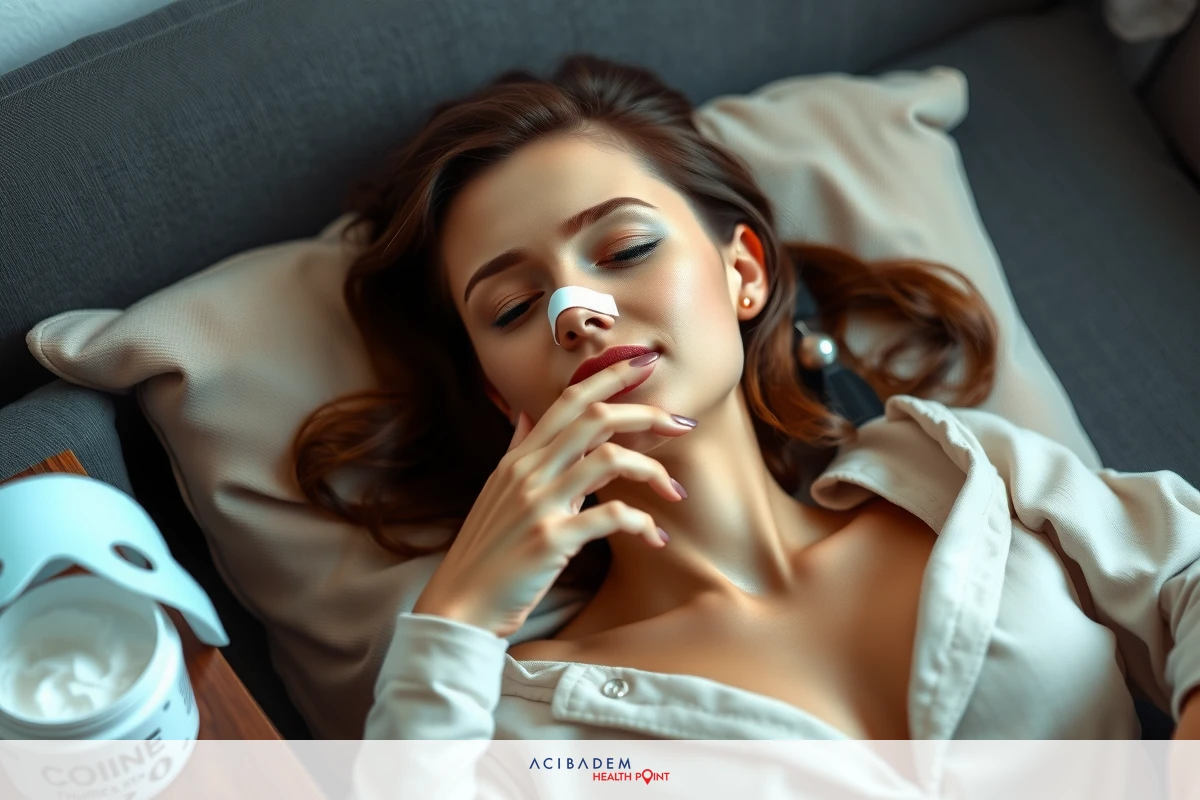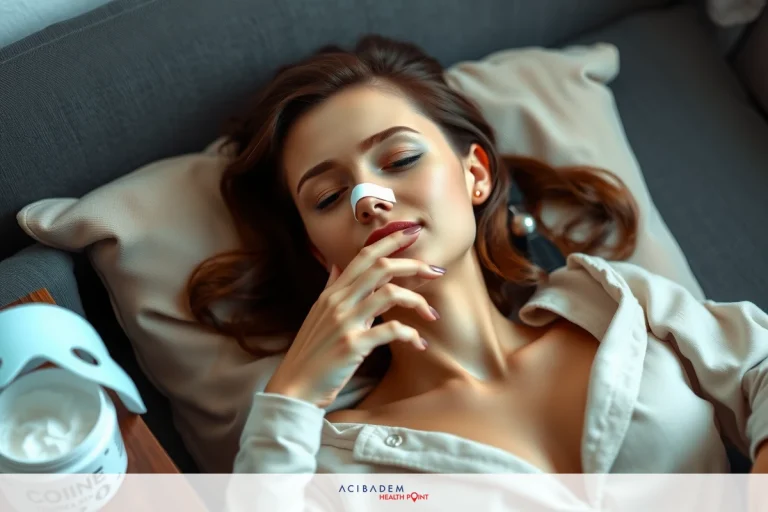When Will My Stitches Dissolve After Rhinoplasty
When Will My Stitches Dissolve After Rhinoplasty The timeline of healing following rhinoplasty, especially when it comes to dissolvable stitches, can be a crucial part of the recovery process. Patients often find themselves inquisitive about this particular aspect of post-surgery care and wonder what kind of timeline they might expect for stitch dissolution.
Providing care for these stitches is an essential step towards successful healing. It’s not just about time; managing discomfort or irritation that may arise with these dissolvable stitches also plays a pivotal role in ensuring smooth recovery after rhinoplasty surgery. Informed patients are empowered patients—knowing what to anticipate helps manage expectations and contributes to overall satisfaction with surgical outcomes.
Timeline for Stitch Dissolution
Stitches play a crucial role in the healing process after rhinoplasty surgery. Their primary function is to hold together the surgical wound, allowing it to heal effectively while maintaining the surgeon’s precise restructuring of your nose. However, stitches are not permanent fixtures; they dissolve over time as part of the recovery journey.
The timeframe for stitch dissolution can vary from patient to patient due to individual physiological factors and type of stitches used. Typically, dissolvable stitches used in rhinoplasty take around one to two weeks to dissolve completely, although some might persist slightly longer depending on their placement and purpose within the surgical plan.
In addition to this general timeline, other aspects such as personal health status and how well you follow post-surgery care instructions could influence stitch dissolution speed. For instance, keeping your nasal area clean would facilitate faster healing thereby potentially speeding up stitch dissolution too.
Upon careful observation during this period post-rhinoplasty surgery, you may notice the loosening of these dissolvable stitches indicating their impending total dissolution. This is a normal sign of progression towards full recovery with no cause for concern unless accompanied by abnormal symptoms like excessive redness or discomfort which should prompt immediate consultation with your healthcare provider.
While waiting patiently for your body’s natural ability to break down these temporary structures may seem daunting at times remember that each day brings you closer towards achieving optimal outcomes from your rhinoplasty procedure – be it aesthetic enhancement or functional restoration. So stay positive knowing that every dissolved stitch marks another step forward in your healing journey!
Finally, yet importantly, understand that while timelines provide a helpful guide, they cannot replace personalized advice tailored specifically based on unique medical histories and surgical specifications. Hence, always consult with professional healthcare providers regarding any questions pertaining to timelines relating specifically to your personal circumstances following rhinoplasty surgeries conducted.
Caring for Dissolvable Stitches
Post-rhinoplasty care is a critical factor in determining the success of your healing and recovery. One aspect that requires particular attention is caring for dissolvable stitches, which play an essential role in holding the surgical site together until it heals adequately.
Here are some helpful tips and guidelines to ensure optimal care for your dissolvable stitches:
- Cleanliness counts: Regularly cleaning around the stitched area with a gentle saline solution can reduce infection risk and promote faster healing.

The image shows a young woman lying down, possibly resting or sleeping. She is wearing a light-colored top and seems to be in a relaxed state with her head comfortably propped up on a pillow. The setting appears cozy and inviting, indicating that the environment is meant for relaxation or leisure. - Avoid strain: Excessive facial movements or blowing your nose might disturb the stitches, so try to avoid these actions during initial recovery stages.
- Stay hydrated: Adequate hydration supports overall health and aids skin elasticity, which may contribute positively towards stitch care.
- Follow dietary instructions: Certain foods might cause swelling or discomfort around the nose; adhering to recommended post-surgery diet would be beneficial.
- Rest well: Sleep plays an integral part in any recovery process including stitch dissolution after rhinoplasty surgery.
- Avoid direct sun exposure: Sunlight can cause discoloration around healing areas; wearing a hat or applying sunscreen could mitigate this issue.
Remember, while these general suggestions serve as a useful guide, always follow specific guidelines provided by your healthcare provider tailored according to individual needs and circumstances postrhinoplasty surgery!
Managing Discomfort
It’s not uncommon to experience some level of discomfort or irritation during the healing process after rhinoplasty surgery, particularly in relation to dissolvable stitches. While this is a normal part of recovery, it’s important not just to endure but actively manage these sensations for a smoother post-surgery experience.
In the early days following your procedure, you might feel a pricking sensation as the stitches start their dissolution process. If you find that your discomfort escalates beyond minor irritations into more persistent pain levels, contacting your healthcare provider should be an immediate step. They may recommend suitable over-the-counter medications or prescribe stronger relief if necessary.
Another method often suggested for managing discomfort associated with dissolvable stitches involves applying cold compresses around the surgical area. These can help reduce swelling and numb slight pains temporarily however caution must be exercised when using them; excessive application could risk damaging tissues surrounding your nose causing unnecessary complications in your recovery journey.
Furthermore, while it’s natural to want to touch or scratch areas where stitches are placed due to itching sensations common towards later stages of stitch dissolution—it is crucially important not do so! This action could potentially disrupt healing progress and increase chances of infection which would undoubtedly compound any existing discomfort experienced previously.
Maintaining realistic expectations about potential post-rhinoplasty discomfort is also key in its management. Understanding from outset that there will likely be moments—particularly within first week after surgery—when comfort levels aren’t at their best can mentally prepare patients making overall process seem less daunting when faced head on!
Rest assured, though every day brings closer resolution, as the body continues doing what it does brilliantly—healing itself naturally, under the guidance provided by expert medical professionals working tirelessly. They ensure optimal outcomes achieved through careful procedural planning followed diligently, adhering to prescribed post-op care measures, including those specifically targeted at managing any inevitable stitch-related discomforts along the way!
When Will My Stitches Dissolve After Rhinoplasty: Frequently Asked Questions
How long does it typically take for the stitches to dissolve after rhinoplasty?
The timeframe can vary depending on various factors, but generally, dissolvable stitches used in a rhinoplasty surgery will start to dissolve within one to two weeks following the procedure.
What should I do if my stitches haven’t dissolved even after a few weeks?
If your stitches have not dissolved within this expected timeframe or you notice any signs of infection such as redness or swelling, it's advised that you consult with your healthcare provider promptly for further examination.
Are there specific care instructions I should follow for my dissolvable stitches post-rhinoplasty surgery?
Yes indeed. Regular cleaning around the stitched area using gentle saline solutions is important. Also avoid straining facial muscles excessively and ensure good hydration levels are maintained among other things!
Will there be discomfort associated with these dissolvable stitches during healing process?
You may experience mild pricking sensations as they start to dissolve which is normal. However persistent pain levels should prompt immediate consultation with healthcare providers who could suggest suitable relief measures.











